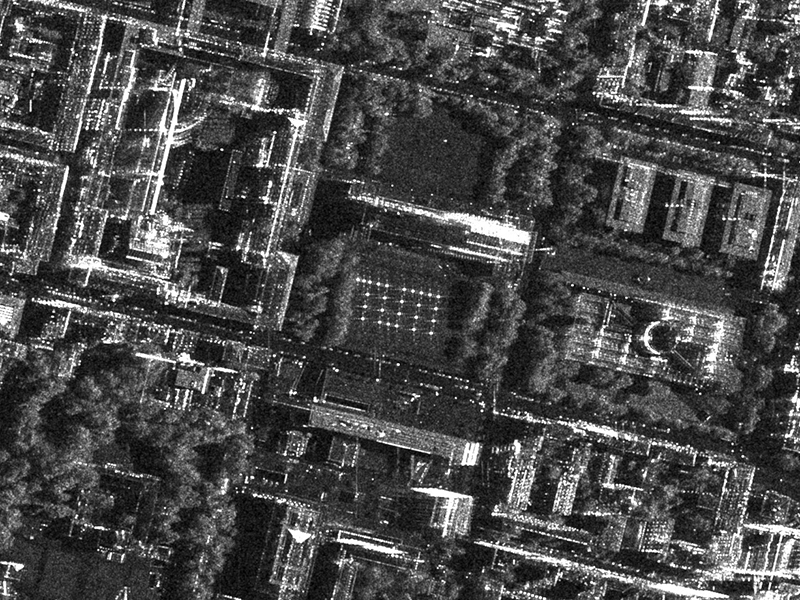Artificial reflectors form TUM logo on satellite image
Anniversary greetings from space

The experiment is based on a joint research project of the TUM and the German Aerospace Center (DLR). "We have developed a new measurement method that allows us to use radar reflectors for surveying," explains Prof. Michael Eineder, Honorary Professor at the TUM and Head of Department at the DLR Institute for Remote Sensing Technology. As with GPS, highly accurate, three-dimensional position measurements can be made. However, instead of GPS devices only simple reflectors, which can be made of inexpensive material, are required on the ground.
The researchers wanted to use their new method to send their congratulations from space for the TUM anniversary. They arranged the so-called corner reflectors on the southern lawn of the Alte Pinakothek Museum to emulate the TUM logo. And indeed, the satellite images created from the raw data show the logo made of bright dots.
The operation also had a scientific aspect, says Michael Schmitt of the Department of Signal Processing in Earth Observation. "In this experiment, we were able to demonstrate that the reflectors, with an edge length of 50 cm, dominate the natural reflections from buildings and cars in the urban surroundings and are thus ideally suited for surveying."
Among other things, the new methodology will be deployed for earth surveying in the future and will be helping to improve the accuracy of digital maps.
Further information
The planning and execution of the event involved members of the Chair of Remote Sensing Technology, the Professorship for Signal Processing in Earth Observation and the Chair of Geodesy, as well as the DLR Remote Sensing Technology Institute (IMF). The joint research project, High Resolution Geodetic Earth Observation, of the DLR@Uni alliance Munich Aerospace also involved employees of the Institute of Astronomical and Physical Geodesy and the DLR German Space Operations Center (GSOC).
Publications:
- Gisinger, C.; Willberg, M.; Balss, U.; Klügel, T.; Mähler, S.; Pail, R.; Eineder, M.: Differential geodetic stereo SAR with TerraSAR-X by exploiting small multi-directional radar reflectors. Journal of Geodesy 91 (1), 2017, 53-67.
- Montazeri, S.; Gisinger, C.; Eineder, M.; Zhu, X. X.; Automatic Detection and Positioning of Ground Control Points Using TerraSAR-X Multi-Aspect Acquisitions. IEEE Transactions on Geoscience and Remote Sensing, 56 (5), 2018, 2613-2632.
Contact:
For the experiment
Dr.-Ing. Michael Schmitt
Technical University of Munich
Professorship of Signal Processing in Earth Observation
Tel: +49-89-289-22643
m.schmitt@tum.de
For the research project
Hon.-Prof. Michael Eineder
DLR Remote Sensing Technology Institute (IMF)
Tel. +49 8153 281396,
Michael.Eineder@dlr.de